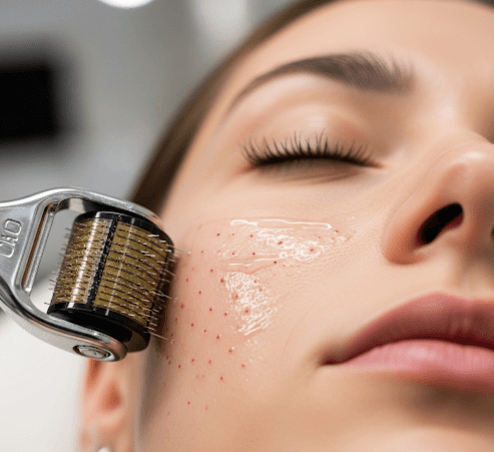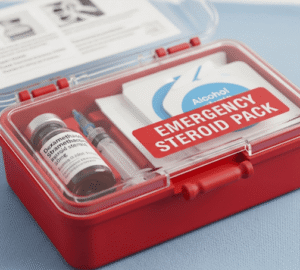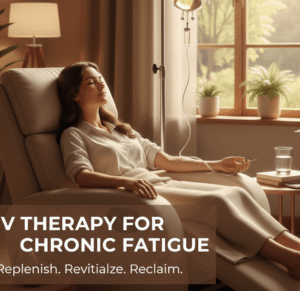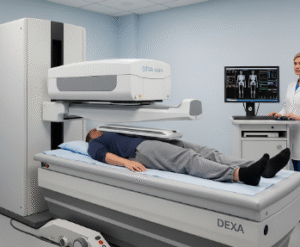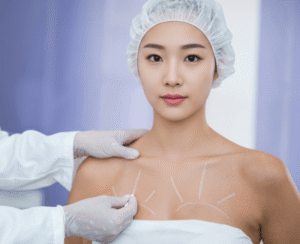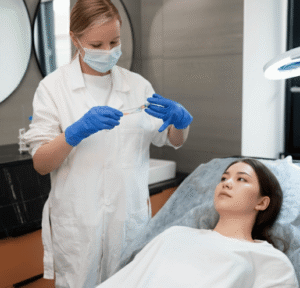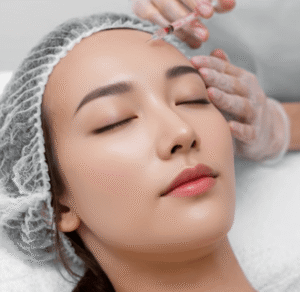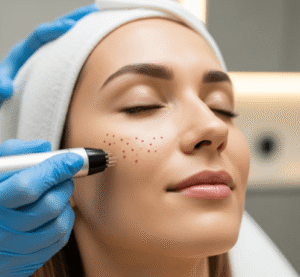Collagen Induction Therapy in Korea is a scientifically advanced treatment designed to stimulate the skin’s natural healing process and boost collagen and elastin production. Also known as microneedling or skin needling, this minimally invasive procedure creates controlled micro-injuries in the skin, which triggers the body’s repair mechanisms. The result is smoother, firmer, and more youthful-looking skin.
In Korea—where anti-aging care and skin perfection are central to beauty culture—collagen induction therapy is widely used for wrinkles, acne scars, enlarged pores, stretch marks, and overall skin rejuvenation. Korean clinics often enhance the procedure with radiofrequency (RF) energy, growth factor serums, PRP (platelet-rich plasma), or skin boosters, ensuring faster healing and more dramatic results.
What It Is
Collagen induction therapy is a minimally invasive skin rejuvenation treatment that uses a device with fine needles to puncture the top layer of skin.
Key variations in Korea:
- Traditional microneedling (Dermaroller or Dermapen) → Manual or automated devices.
- RF microneedling (Secret RF, INTRAcel, Morpheus8, Sylfirm X) → Combines microneedling with radiofrequency energy for enhanced tightening.
- PRP microneedling (“Vampire Facial”) → Uses patient’s platelet-rich plasma to accelerate healing.
- Booster infusion microneedling → Delivers serums like hyaluronic acid, Rejuran, or peptides directly into skin.
This therapy improves not only the surface appearance of the skin but also its structural integrity by stimulating deep dermal collagen production.
Why It’s Done
Patients pursue collagen induction therapy in Korea for:
- Anti-aging → Reduces fine lines, wrinkles, and sagging.
- Acne scar treatment → Smooths pitted scars and uneven texture.
- Pore refinement → Shrinks enlarged pores.
- Skin rejuvenation → Improves tone, texture, and elasticity.
- Stretch mark reduction → Improves the appearance of body scars.
- Preventive care → Koreans often start in their 20s–30s to maintain long-term skin health.
Alternatives
If collagen induction therapy is not the preferred option, Korean clinics offer alternatives:
- Laser resurfacing (Fraxel, CO₂, Er:YAG) → For deeper scars and wrinkles.
- Chemical peels → For superficial exfoliation and tone improvement.
- Ultrasound lifting (Ulthera, Shurink HIFU) → For non-invasive tightening.
- RF tightening (Thermage) → Stimulates collagen without needles.
- Injectable skin boosters (Rejuran, Profhilo, PRP) → Regenerate skin from within.
Preparation
Preparation for collagen induction therapy in Korea includes:
- Consultation → Skin analysis to determine treatment depth and device type.
- Pre-care instructions → Avoid retinoids, exfoliants, and harsh skincare for 3–5 days before treatment.
- Sun protection → Avoid tanning and sunburn before the session.
- Clean skin → Patients should arrive makeup-free.
Topical numbing cream is applied before the procedure to minimize discomfort.
How It’s Done
A collagen induction therapy session in Korea typically lasts 45–75 minutes:
- Cleansing – Removal of makeup, oils, and impurities.
- Numbing cream – Applied for 20–30 minutes for comfort.
- Microneedling process –
- Fine needles create controlled micro-injuries.
- Depth varies depending on treatment goal (0.5–2.5 mm).
- If RF microneedling, radiofrequency energy is delivered simultaneously.
- Serum/booster application – Hyaluronic acid, peptides, or PRP infused into skin.
- Soothing therapy – Cooling masks, LED red light, or calming ampoules.
- Final step – Sunscreen applied before leaving the clinic.
Most patients undergo 3–6 sessions spaced 4–6 weeks apart for optimal results.
Recovery
Recovery depends on the intensity:
- Immediately after → Redness similar to sunburn, mild swelling.
- 1–3 days later → Redness subsides; some dryness or peeling may occur.
- 1 week later → Skin looks smoother and more radiant.
- Long-term → Collagen remodeling continues for 3–6 months.
Korean clinics accelerate healing with LED therapy, antioxidant ampoules, and hydration masks.
Complications
Collagen induction therapy is safe in Korea, but possible side effects include:
- Redness, swelling, or pinpoint bleeding.
- Mild peeling or dryness.
- Hyperpigmentation if sun protection is neglected.
- Rare infection if aftercare instructions are ignored.
Korean dermatologists minimize risks by using sterile devices, personalized needle depths, and conservative multi-session protocols.
Treatment Options
Korean clinics offer various collagen induction therapy programs:
- Basic microneedling → For mild texture and pore improvement.
- RF microneedling (Secret RF, Sylfirm X, INTRAcel) → For scars, wrinkles, and skin tightening.
- PRP microneedling (“Vampire Facial”) → For faster healing and regeneration.
- Booster infusion therapy → Microneedling with Rejuran, Profhilo, or hyaluronic acid.
- Comprehensive rejuvenation packages → Combination of microneedling, laser toning, and Aqua Peel.
Clinics in Seoul, especially in Gangnam, provide multi-session deals making collagen induction therapy both accessible and affordable for locals and international patients.
Conclusion
Collagen Induction Therapy in Korea is one of the most advanced and versatile treatments for anti-aging, scar repair, and skin rejuvenation. With options such as traditional microneedling, RF microneedling, PRP-enhanced therapy, and booster infusions, Korean dermatologists deliver safe and effective results tailored to each patient’s needs.
By combining cutting-edge devices with K-beauty’s holistic aftercare philosophy, Korea has become a global leader in collagen therapy. For those seeking smoother, firmer, and more radiant skin, collagen induction therapy in Korea offers a world-class solution with long-lasting benefits.

